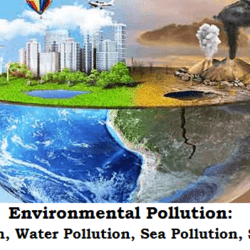
Pollution is the effect of undesirable changes in our surroundings that have harmful effects on plants, animals and human beings. During the last few decades we have contaminated our air, water and land on which life itself depends with a variety of waste products.
Pollutants:
Pollutants include solid, liquid or gaseous substances present in greater than natural abundance produced due to human activity, which have a detrimental effect on our environment.
From an ecological perspective pollutants can be classified as follows:
Degradable (or Non-persistent Pollutants): These can be rapidly broken down by natural processes.
Eg: domestic sewage, discarded vegetables, etc.
Slowly Degradable (or Persistent Pollutants): Pollutants that remain in the environment for many years in an unchanged condition and take decades or longer to degrade.
Eg: DDT and most plastics.
Non-Degradable Pollutants: These cannot be degraded by natural processes. Once they are released into the environment they are difficult to eradicate and continue to accumulate.
Eg: Toxic elements like lead or mercury.
Types of Pollution:
- Air Pollution
- Water pollution
- Sea pollution
- Soil pollution
- Sound/noise pollution
- Thermal pollution
- Nuclear pollution
Air Pollution
Air pollution occurs due to the presence of undesirable solid or gaseous particles in the air in quantities that are harmful to human health and the environment.
Sources:
- Air may get polluted by natural causes such as volcanoes, which release ash, dust, sulphur and other gases, or by forest fires that are occasionally naturally caused by lightning.
- However, unlike pollutants from human activity, naturally occurring pollutants tend to remain in the atmosphere for a short time and do not lead to permanent atmospheric change.
Pollutants that are emitted directly from identifiable sources are produced both by natural events (for example, dust storms and volcanic eruptions) and human activities (emission from vehicles, industries, etc.). These are called primary pollutants. Pollutants that are produced in the atmosphere when certain chemical reactions take place among the primary pollutants are called secondary pollutants.
Pollutants are also found indoors from infiltration of polluted outside air and from various chemicals used or produced inside buildings. Both indoor and outdoor air pollution are equally harmful.
Particulates:
Particulates are small pieces of solid material (for example, smoke particles from fires, bits of asbestos, dust particles and ash from industries) dispersed into the atmosphere.
e.g. Aerosol: General term for particles suspended in air Sprays from pressurized cans
Mist: Aerosol consisting of liquid droplets
Fog: Aerosol consisting of water droplets
Effects:
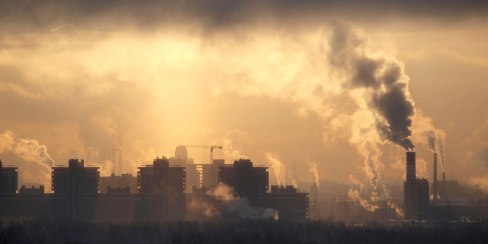
- Smog: Pollutants produce smog (smoke + fog) which reduces visibility and sun rays reaching to the surface.
- It also causes many ailments like irritation of bronchi, cough, nasal discharges, and sore throat, vomiting and burning sensations in the eyes.
- Acid Rain: Pollutants like sulphur dioxide and nitrogen oxides form acids which through rain (known as acid rain) reach to the Earth.
- It contributes to human respiratory diseases such as bronchitis and asthma, which can cause premature death.
- It also damages statues, buildings, metals and car finishes.
- It can damage tree foliage directly but the most serious effect is weakening of trees so they become more susceptible to other types of damage.
- It can lead to excessive soil nitrogen levels which can over stimulate growth of other plants and intensify depletion of other important soil nutrients such as calcium and magnesium, which in turn can reduce tree growth.
- Harmful particulates: Prolonged exposure to air pollutants can overload or breakdown the natural defenses in the respiratory tract causing or contributing to diseases such as lung cancer, asthma and chronic bronchitis, etc.
- Many volatile organic compounds such as (benzene and formaldehyde) and toxic particulates (such as lead, cadmium) can cause mutations, reproductive problems or cancer.
- Chronic exposure of the leaves to air pollutants can break down the waxy coating that helps prevent excessive water loss and leads to damage from diseases, pests, rough and frost.
- Ozone Depletion: Particulates like CFCs (chloro-fluro-carbons) which are used in many industrial applications like aerosols, air conditioners, refrigerators and fire extinguishers and cause depletion of ozone layer in the Stratosphere.
- The depletion of ozone layer leads to warming up of the Earth (known as Global Warming) through Green House Effect.
Control Measures:
Air pollution can be controlled by two fundamental approaches: preventive techniques and effluent control.
Preventive Techniques:
- Reducing the use of fossil fuels
- Improving the quality of vehicular fuel
- Increasing the use of renewable energy
- Providing a greater height to the stacks can help in facilitating the discharge of pollutants as far away from the ground as possible.
- Industries should be located in places so as to minimize the effects of pollution after considering the topography and the wind directions.
- Substitution of raw material that causes more pollution with those that cause less pollution can be done. For example replacing CFCs with HFCs, using public transport instead of too many individual vehicles, etc.
Effluent Control:
- This includes devices for removal of pollutants from the flue gases before they escape into the atmosphere through filters, electrostatic precipitators, etc.
- Using proper exhaust gas treatment in the vehicles so as to minimize the effect of harmful gases.
Water Pollution
When the quality or composition of water changes directly or indirectly and becomes unfit for any purpose it is said to be polluted.
Sources:
Point Source: When a source of pollution can be readily identified because it has a definite source and place where it enters the water.
Eg. Municipal and Industrial Discharge Pipes.
Non-point Source: When a source of pollution cannot be readily identified, such as agricultural runoff, acid rain, etc, they are said to be non-point sources of pollution.
- Sediment of suspended matter has insoluble particles of soil and other solids that become suspended in water.
- Oil is washed into surface water in runoff from roads and parking lots which also pollutes groundwater.
Effects:

- Reduced quality of water: water soluble chemicals which are acids, salts and compounds of toxic metals such as mercury and lead can make the water unfit to drink, harm aquatic life, reduce crop yields and accelerate corrosion of equipment that use this water.
- Disease causing: Bacteria, viruses, protozoa and parasitic worms that enter water from domestic sewage and untreated human and animal wastes cause many disorders when consumed.
- Oxygen depletion: Large populations of bacteria use up the oxygen present in water to degrade organic wastes to reduce the water quality.
- The amount of oxygen required to break down a certain amount of organic matter is called the Biological Oxygen Demand (BOD). The amount of BOD in the water is an indicator of the level of pollution.
- If too much organic matter is added to the water all the available oxygen is used up. This causes fish and other forms of oxygen dependent aquatic life to die.
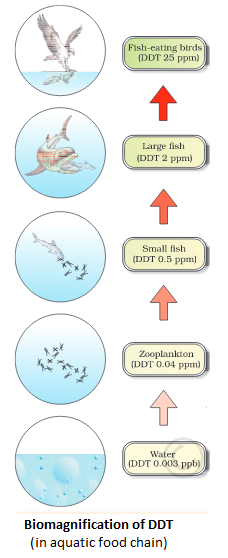
- Eutrophication: Inorganic plant nutrients like nitrates and phosphates cause excessive growth of algae and other aquatic plants (called Eutrophication). They may interfere with the use of the water by clogging water intake pipes, changing the taste and odour of water and cause a buildup of organic matter. As the organic matter decays, oxygen levels decrease and fish and other aquatic species die.
- Bioaccumulation and Biomagnification: Pesticides which enter water bodies are introduced into the food chains and at each link in the food chain these chemicals which do not pass out of the body are accumulated and increasingly concentrated (called Biomagnification)
Control Measures:
Water pollution can be controlled by two fundamental approaches: preventive techniques and effluent control. While the foremost necessity is prevention, setting up effluent treatment plants and treating waste through these can reduce the pollution load in the recipient water. The treated effluent can be reused for either gardening or cooling purposes wherever possible.
Sea (Marine) Pollution
Sea (Marine) pollution can be defined as the introduction of substances to the marine environment directly or indirectly resulting in adverse effects on marine life and activities.
Causes:
• Municipal and sewage waste: The most obvious inputs of waste are through pipes directly discharging municipal waste and sewage from residences and hotels in coastal towns are directly discharged into the sea.
• Pesticides and fertilizers: From agriculture they are washed off the land by rain, enter water courses and eventually reach the sea.
• Petroleum spillage and dredging of sea: Ship accidents and accidental spillages at sea therefore can be very damaging to the marine environment. Shipping channels in estuaries and at the entrances to ports often require frequent dredging to keep them open. This dredged material that may contain heavy metals and other contaminants are often dumped out to sea.
• Offshore oil exploration: Oil that is extracted from the seabed contains some water. Even after it is passed through oil separators the water that is discharged contains some oil, which adds to marine pollution. Uncontrolled release of oil from the wells can be catastrophic events resulting in oil pollution.
Effects:
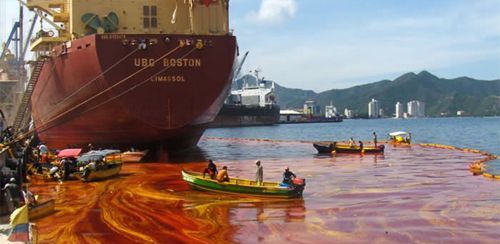
- Eutrophication: Apart from causing Eutrophication, a large amount of organic wastes can also result in the development of red tides. Many important commercially important marine species are also killed due to clogging of gills or other structures.
- Oil sick: When liquid oil is spilled on the sea it spreads over the surface of the water to form a thin film called an oil slick. Salt marshes, mangrove swamps are likely to trap oil and the plants affecting their flowering, fruiting and germination.
- If liquid oil contaminates a bird’s plumage its water repellent properties are lost and the plumage becomes water logged and the birds may sink and drown. Even if this does not happen loss of thermal insulation results in exhaustion of food reserves in an attempt to maintain body temperature often followed by death.
- Fish and shellfish production facilities can also be affected by oil slicks.
Control Measures:
Water pollution can be controlled by two fundamental approaches: preventive techniques and effluent control. Some of the important measures include:
- Treating municipal and sewage waste before being drained into the sea.
- Cleaning oil from surface waters and contaminated beaches through the use of chemical dispersants which can be sprayed on the oil.
- Following stringent measures of ship movement and tracking of oil spillage events.
Soil Pollution
Soil pollution is defined as the presence of toxic chemicals (pollutants or contaminants) in soil, in high enough concentrations to pose a risk to human health and/or the ecosystem.
Causes:
- Erosion: Soil erosion can be defined as the movement of surface litter and topsoil from one place to another. While erosion is a natural process often caused by wind and flowing water it is greatly accelerated by human activities such as farming, construction, overgrazing by livestock, burning of grass cover and deforestation.
- Excess use of fertilizers: The three primary soil nutrients often in short supply are potassium, phosphorus and nitrogen compounds. These are commonly referred to as macronutrients. Pesticides not only kill the pests but also a large variety of living things including humans. Persistent pesticides once applied are effective for a long time.
- Excess salts and irrigation: Irrigation water contains dissolved salts and in dry climates much of the water in the saline solution evaporates leaving its salts (called salinization). This reduces the fertility of the land and can stunt plant growth.
- Solid wastes: Disposal of plastics, cans, and other solid waste falls into the category of soil pollution. Disposal of electrical goods such as batteries causes an adverse effect on the soil due to the presence of harmful chemicals. For instance, lithium present in batteries can cause leaching of soil.
Effects:
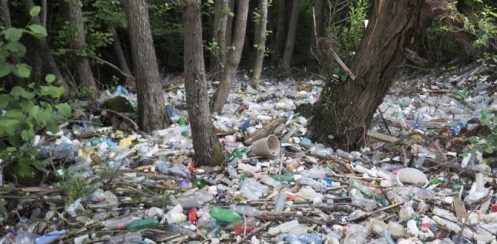
- Lesser productivity: Loss of the topsoil makes a soil less fertile and reduces its water holding capacity.
- Water pollution: The topsoil, which is washed away, also contributes to water pollution clogging lakes, increasing turbidity of the water and also leads to loss of aquatic life.
- Harmful to life: It will increase the exposure to toxic chemicals thus increasing health threats to human and animal lives.
- Negative effects on environment: Erosion of soil leads to loss of tree cover and thus biodiversity impacting lives of living organisms in the ecosystem.
Control Measurement:
- Prevention of soil erosion: Many techniques can be used to check soil erosion like
- Continuous Contour Trenches (enhances infiltration of water reduce the run-off),
- Live Check Dams (barriers created by planting grass, shrubs and trees across the gullies)
- Gabion structure (a bund constructed of stone and wrapped in galvanized chain link)
- Sustainable agriculture: It advocates the use of methods to produce adequate safe food in an economically viable manner while maintaining the state of the ecosystem.
- Like employing Organic Farming avoiding the use of chemical fertilizers and pesticides.
- Leaving crop residue on the soil and incorporating it into the soil reduces erosion and increase soil organic matter.
- Crop rotation is an effective way to enhance soil fertility, reduce erosion and control pests.
- Use of integrated pest management promotes the use of biopesticides that are derived from three sources: microbial, botanical and biochemical.
- Solid waste management: Managing solid waste properly prevents degradation of land and soil.
More Topics from Paper- IV: Applied Science

 Home
Home Syllabus
Syllabus Contact Us
Contact Us



